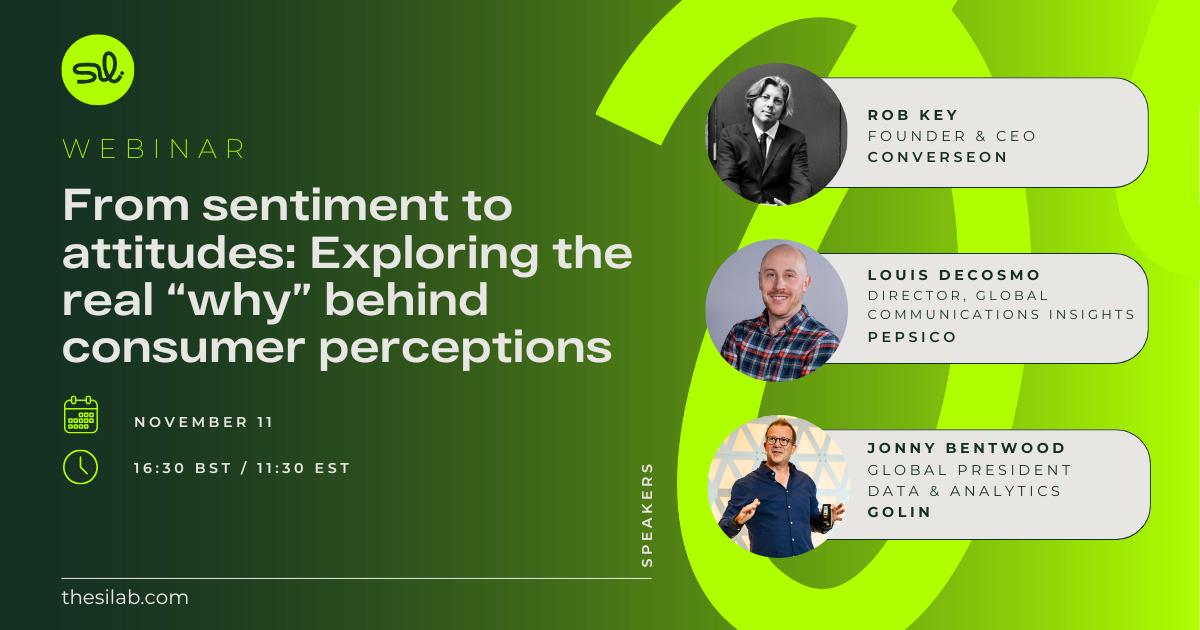
5 reasons why your social listening strategy isn't working
With the ability to monitor real-time consumer conversations, social listening is one of the best ways to gain accurate insights into your audience, your competitors and the market in general. But according to a Socialbakers report, most organisations aren’t using it to its full potential. For example, only 8% of brands who leveraged a listening solution used it for competitive research and analysis.  If social listening is so valuable, why aren’t businesses using it more? The answer lies in execution. Some organisations struggle to get value out of social listening because they don’t know how to derive actionable insights from it. If you’re in the same boat, here are some of the top reasons why your social listening strategy might not be working:
1. Noisy data
Social listening often involves having to sift through a huge amount of noise. Twitter alone sees about 500 million tweets per day, and not all of those tweets will be relevant to your business. Even if you narrow your query to focus on certain keywords and phrases, you could still end up with irrelevant results once you look more closely at the context they’re used in.   If you don’t filter out the noise, you’ll end up with poor-quality data. This can harm your social listening efforts as you’ll be drawing conclusions based on inaccurate results.  This leads us on to our second reason.
2. Bad query writing
A clear and comprehensive query is everything when it comes to social listening. In fact, a poor query is the reason why you end up with noisy data in the first place. For example, not all tweets that contain the word “apple” will be relevant to the brand, Apple. So if you run searches using the keyword “apple” but don’t exclude results for the fruit, you will end up with a ton of irrelevant posts. Likewise with the brand Amazon. If you don’t refine your query, you’re likely to end up with a lot of results relating to the Amazon rainforest. Good query writing is one of the most crucial steps when you’re getting started with social listening.
3. Using dashboard exports
Once you’ve collected all the social listening data you need, your first instinct may be to share the dashboard export directly with different teams. This is another critical mistake. Graphs and charts may instantly make sense for listening analysts, but the same cannot be said for those in different job functions. If you leave it up to them to interpret graphs and other social listening data, you’re likely going to leave them confused. That’s because sharing a dashboard is just sharing data, not insights. Instead of sharing the numbers, it makes more sense to offer insights and recommendations they can use in their specific job function. [caption id="attachment_7580" align="alignnone" width="607"]

Dashboards just show data, not insights[/caption]
4. You’re not asking the right questions
Not asking specific questions is another reason why you end up with noisy data and why your social listening efforts fail. Many businesses conduct social listening without any real outcome or aim in mind. This means they don’t know what to listen for and how to make sense of the listening data they collect. Do you want to know what consumers are saying about your competitors? Or do you want to gauge interest in your newly-launched product? Or perhaps you want to listen for negative feedback to improve customer experience. Without specific questions to guide your social listening efforts, you won’t have a clear sense of direction to follow. That means zero return on your time and investment since you’re not getting any actionable insights.
5. You’re trying to measure the impact of a campaign
Social listening was not created to measure campaign impact. Although this is one of the most common use cases for social listening, it’s one of the least valuable to the business. The Socialbakers study from earlier revealed that many organisations still don’t apply social listening where it’s most valuable. According to the study, most brands are still not using social listening for audience analysis, even though it often provides the best source of insight.  And social listening can be used for so much more – from content inspiration to engagement opportunities to influencer identification.
Make social listening work for you
Building good queries and asking specific questions are crucial to minimise noisy data and derive valuable social listening insights. Avoid the five critical mistakes above to improve your social listening strategy.  
This interview was recorded via LinkedIn Live, if you prefer to view on LinkedIn, click the button below.
View InterviewSee related content
.png)








